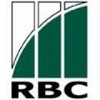
i
Verity Knowledge
Solutions
Filter interviews by
Verity Knowledge Solutions Analyst Interview Questions and Answers
Verity Knowledge Solutions Analyst Interview Experiences
11 interviews found
(2 Questions)
- Q1. Difference between fcff and fcfe
- Ans.
FCFF is the cash flow available to all providers of capital, while FCFE is the cash flow available to equity shareholders.
FCFF includes debt and equity holders, while FCFE only includes equity holders.
FCFF is used to value the firm as a whole, while FCFE is used to value equity.
FCFF is calculated as EBIT(1-Tax Rate) + Depreciation - Capex - Change in Working Capital, while FCFE is calculated as FCFF - Interest(1-Tax Ra...
- Q2. Impairment of assets
I applied via Campus Placement and was interviewed in Aug 2024. There were 2 interview rounds.
Basic quants, accounting and general ability
(2 Questions)
- Q1. What is eps and diluted equity
- Ans.
EPS stands for earnings per share, which is a company's profit divided by the number of outstanding shares. Diluted equity refers to the total value of a company's shares if all potential shares were converted into common stock.
EPS is calculated by dividing a company's net income by the number of outstanding shares.
Diluted equity takes into account potential shares that could be converted into common stock, such as sto...
- Q2. What is enterprise value
- Ans.
Enterprise value is a measure of a company's total value, taking into account its market capitalization, debt, and cash.
Enterprise value = Market capitalization + Total debt - Cash and cash equivalents
It represents the total value of a company that would need to be paid by an acquirer in a takeover
EV is used to compare companies with different capital structures or levels of debt
It is a more comprehensive measure than ...
(2 Questions)
- Q1. Tell me something about yourself
- Ans.
I am a dedicated and detail-oriented analyst with a strong background in data analysis and problem-solving.
I have a Bachelor's degree in Statistics and have completed multiple data analysis projects during my studies.
I am proficient in using statistical software such as R and Python for data analysis.
I have experience in conducting market research and creating reports to help businesses make informed decisions.
I am a q...
- Q2. Link between CF, P&L and BS
- Ans.
Cash flow, profit and loss, and balance sheet are interconnected financial statements that provide a comprehensive view of a company's financial health.
Cash flow statement shows how changes in balance sheet and income statement affect cash and cash equivalents.
Profit and loss statement shows the company's revenues, expenses, and profits over a specific period.
Balance sheet provides a snapshot of a company's financial p...
Interview Preparation Tips
I applied via Campus Placement and was interviewed in Dec 2023. There was 1 interview round.
(3 Questions)
- Q1. What are the 3 financial Statement's?
- Ans.
The 3 financial statements are the income statement, balance sheet, and cash flow statement.
Income statement shows a company's revenues and expenses over a period of time.
Balance sheet provides a snapshot of a company's financial position at a specific point in time.
Cash flow statement shows how changes in balance sheet and income statement affect cash and cash equivalents.
- Q2. What are types of Depreciation?
- Ans.
Types of depreciation include straight-line, double declining balance, units of production, and sum-of-the-years-digits.
Straight-line depreciation: Allocates an equal amount of depreciation expense each year.
Double declining balance: Accelerates depreciation by applying a fixed rate to the book value of the asset.
Units of production: Depreciation is based on the actual usage or production of the asset.
Sum-of-the-years-...
- Q3. Explain Components of Balance sheet?
- Ans.
Balance sheet components include assets, liabilities, and equity.
Assets: Resources owned by the company such as cash, inventory, and property.
Liabilities: Debts and obligations owed by the company such as loans and accounts payable.
Equity: Represents the owner's stake in the company's assets after deducting liabilities.
Balance sheet equation: Assets = Liabilities + Equity.
I applied via Walk-in and was interviewed before Jun 2023. There was 1 interview round.
(1 Question)
- Q1. About cv and yourself
Interview Preparation Tips
Experience: Resume was asked for in the beginning of the selection procedure.
Round: Technical Interview
Experience: In the interview they asked me HR and core field related questions. They asked me about myself and my family. They also asked me questions from my CV.
The questions from the core field were mainly from accounts. Topics covered were:-
1. Accrued incomes.
2. Outstanding incomes.
3. Golden rules and principles.
4. Quasi rent (from economics).
5. Questions from accounts/economics course material of college.
College Name: LADY SHRI RAM COLLEGE
Interview Preparation Tips
Experience: Candidates with CGPA greater than 7 were shortlisted.
Round: Interview
Experience: The interview was conducted in two rounds. Questions based on my resume and some finance questions were asked.
General Tips: In ascending order of importance, for getting shortlisted:
1) PoRs
2) Extra, co-curricular activities
3) Projects
4) Technical Skills example coding etc.
5) Academic Achievements
6) Internships
7) CGPA
College Name: IIT MADRAS
Interview Questionnaire
5 Questions
- Q1. What is beta, 0 beta, negative beta
- Ans.
Beta is a measure of a stock's volatility in relation to the market. 0 beta means the stock's price is not affected by market movements. Negative beta means the stock moves opposite to the market.
Beta measures a stock's volatility in relation to the market
A beta of 1 means the stock moves in line with the market
A beta of 0 means the stock's price is not affected by market movements
A negative beta means the stock moves ...
- Q2. How will you value a private comapny
- Ans.
Valuing a private company involves analyzing financial statements, market trends, and comparable transactions.
Analyze financial statements to determine revenue, expenses, and profitability
Consider market trends and industry outlook to assess growth potential
Research comparable transactions to determine valuation multiples
Apply discounted cash flow analysis to estimate future cash flows
Consider intangible assets such as...
- Q3. Case study to draw up financial statements from 3 transactions
- Ans.
Analyze three transactions to create financial statements, showcasing the impact on assets, liabilities, and equity.
Transaction 1: Company sells goods for $1,000 cash. Increases cash (asset) and revenue (equity).
Transaction 2: Company purchases equipment for $500 cash. Decreases cash (asset) and increases equipment (asset).
Transaction 3: Company pays $200 for rent. Decreases cash (asset) and increases rent expense (equ...
- Q4. About yourself
- Q5. Your motivations, weakness
- Ans.
My motivation is to constantly learn and improve. My weakness is that I can be too self-critical at times.
Motivated by a desire to learn and grow
Driven to constantly improve my skills and knowledge
Can be overly self-critical and need to work on self-compassion
Example: Motivated to take on new projects and challenges to expand my skillset
Example: Struggle with imposter syndrome and need to remind myself of my accomplish...
Interview Preparation Tips
Experience: They look for a CGPA of 7+
Round: Technical Interview
Experience: be confident with answers, be thorough with all the concepts
Tips: focus on valuation, practical application of the concepts
Round: HR Interview
Experience: Again be confident, communication skills
General Tips: Know about the valuation concepts in and out.
Skills: financial analysis, financial terms, ratios
College Name: IIT MADRAS
Interview Questionnaire
1 Question
- Q1. Basics in Finance (Accounting mostly)
Interview Preparation Tips
Skill Tips: "CFA level-1 preparation would help; clearing of level-1 exam would be even better!"
Skills: Finance Knowledge
College Name: IIT Madras
Interview Preparation Tips
Experience: Two rounds of personal interviewAlso includes a test but supposedly got cancelled last year.CGPA Criteria: 7.0 and above
Round: Interview
Experience: 1st round consisted of finance questions like accounting etc. and questions on stuff mentioned in resume e.g., projectsBe sure to be quizzed on financial skills mentioned in your resume
Tips: Investopedia can be very useful here.Accounting fundaes are needed and courses like Infrastructure finance will help.NCFM and CFA will surely help.
Round: Interview
Experience: 2nd round will be totally HR with questions related to your strengths, weaknesses and likings.
Tips: NCFM and CFA will surely help.
College Name: IIT Madras
Top trending discussions






Verity Knowledge Solutions Interview FAQs
Tell us how to improve this page.
Verity Knowledge Solutions Interviews By Designations
- Verity Knowledge Solutions Analyst Interview Questions
- Verity Knowledge Solutions Investment Banking Analyst Interview Questions
- Verity Knowledge Solutions Research Analyst Interview Questions
- Verity Knowledge Solutions Investment Banking Associate Interview Questions
- Verity Knowledge Solutions Financial Analyst Interview Questions
- Verity Knowledge Solutions Document Specialist Interview Questions
- Verity Knowledge Solutions Research Associate Interview Questions
- Verity Knowledge Solutions Data Analyst Interview Questions
- Show more
Interview Questions for Popular Designations
Overall Interview Experience Rating
based on 6 interview experiences
Difficulty level
Duration
Interview Questions from Similar Companies
Verity Knowledge Solutions Analyst Reviews and Ratings
based on 6 reviews
Rating in categories
|
Investment Banking Associate
210
salaries
| ₹8.5 L/yr - ₹14.3 L/yr |
|
Investment Banking Analyst
96
salaries
| ₹5 L/yr - ₹11 L/yr |
|
Associate
68
salaries
| ₹5.7 L/yr - ₹12.5 L/yr |
|
Document Specialist
64
salaries
| ₹3 L/yr - ₹6.5 L/yr |
|
Senior Associate
43
salaries
| ₹6 L/yr - ₹14 L/yr |

Nomura Holdings

MUTHOOT HOMEFIN (I) LTD.

Adarsh Credit Co-Operative Society

Debtcare Enterprises
- Home >
- Interviews >
- Verity Knowledge Solutions Interview Questions













